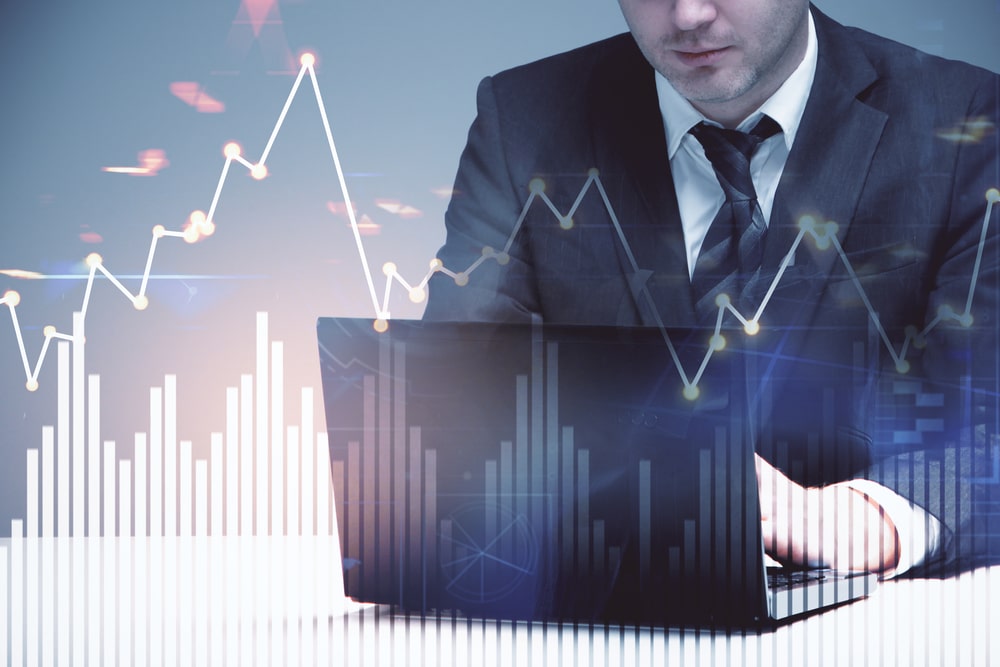
Forex brokerage models are the systems forex brokers utilize to execute client orders in the market. There are five main models in use today. However, some brokers may choose to combine two or more of the conventional models to better suit their client’s needs.
Market maker/ B-book forex brokerage model
Market makers are essentially middlemen between the forex market and their clients. They quote two prices to the client, a bid and ask price. These prices fluctuate with price movements in the market. These brokers make money by charging a spread to their clients. The difference between their buying price (bid) and their selling price (ask) is the spread.
Market makers aim to sell their currency at the highest price possible while buying at the lowest possible price. Therefore, they are highly motivated to take maximum spreads from their clients.
Further, market makers often trade against their clients. For instance, if a trader intends to sell a currency, the broker will buy from them and vice versa. Clearly, these brokers do not have their client’s best interests at heart.
Statistically, only 30% of people make a profit trading forex, compared to the rest who expect to turn a profit trading forex. Market makers prey on this fact, and they occasionally profile their clients. The market maker analyses their client as a winner or loser and either holds on to or executes the trade contrary to their client’s order for their own profit.
Another common occurrence is where brokers change their spread to affect the execution of a stop loss order. Additionally, some brokers delay executing their client’s orders or manipulate them for their own benefit. Market makers have also been known to vary their spread when exchange prices are fluctuating rapidly.
Electronic communication network (ECN) forex brokerage model
These brokers provide their clients with an ECN trading platform, which enables them to access the forex market. On this platform, prices are updated in real time, which is a great improvement in price transparency compared to market makers. The ECN model essentially cuts out the middleman (the market maker).
Since the client’s order is autonomously executed, there is minimal human error. It also prevents the requotations otherwise common with market makers, which benefits clients who fancy news trading. ECN also allows brokers to quote lower spreads than market makers. However, since ECN brokers do not quote a fixed spread width, this could introduce transparency discrepancies during periods of high market volatility.
ECN brokers also have flexible charging models depending on their client’s needs. Some charge a flat commission per trade. This favors clients who execute large trades infrequently. Others prefer to vary their spread so that their commission is commensurate with the amount spent per trade, which benefits clients who trade small amounts regularly.
Straight through processing (STP)/ A-book forex brokerage model
STP is a fully automated trading model. An STP broker selects a group of interbank forex traders/liquidity providers, essentially creating a handpicked portion of the forex market. The broker then proceeds to enter their client’s orders anonymously into this group of liquidity providers.
Such a broker can obtain quotes from different liquidity providers, which enables them to offer better prices and lower spreads to their clients. Also, since the whole process of executing orders is fully automated, errors from human negligence can be ruled out.
Direct market access (DMA)
The DMA brokers take client orders and match them with market makers who work for major liquidity providers. Essentially, all orders from clients are directly transferred to these liquidity providers. To facilitate instant execution, it is commonplace for a DMA broker to personally fill the order before choosing whether to alleviate the risk through another liquidity provider or not. When done this way, DMA becomes less transparent to the client.
Furthermore, the spread charged by DMA brokers is not constant, which can affect pricing transparency, especially in periods of high volatility. The platform utilized to process trades in this model also charges a commission on trades on top of the brokerage fees.
It is a common occurrence for ECN brokers to simultaneously offer DMA services. A few STP brokers also offer DMA, though it is less common.
Hybrid forex brokerage models
In some cases, brokers find it prudent to employ a blend of the common mainstream forex brokerage models to better serve their client’s needs. Other brokers may choose to use one model for a particular subset of clients while using a different one for other clients. For instance, ECN could better serve traders dealing in large volume trades, while those trading smaller volumes would be better served by market makers.
A typical hybrid is a blend of ECN or STP and DMA, which yields a completely autonomous model. The perks of automating the whole trading process include minimal human error and significant cost savings once the model is fully developed. In addition, the broker’s human staff can utilize their skills in other vital avenues of their field, such as customer service.
However, total automation isn’t without its faults. An autonomous system is vulnerable to hacking, data loss, data leakage, and power failures.
The multilateral trading facility (MTF)
This is a rather recent development that is used by online forex trading platforms, which are run like regulated exchanges. Essentially, an MTF brings traders and dealers together, allowing them to trade under contract amongst themselves.
In MTFs, traders enjoy transparency, low brokerage fees, and smooth transaction execution, all in a fair trading environment.
How to pick the most appropriate model
When picking a forex brokerage model, your capital outlay, trading strategies, and how often you intend to trade are some of the vital factors to consider. Most traders steer clear of market makers, owing to their lack of pricing transparency and the fact that they essentially bet against the client.
Traders dealing in large volumes will often pick ECN or STP due to the minimal human error, lower spreads, and faster order execution. Such automated models also solve the problem of price re-quotation when exchange prices are fluctuating quickly. On the other hand, a trader who fancies social trading strategies would benefit from an MTP since the pool of sellers and buyers would provide them with the social trading insights they need.








Leave a Reply